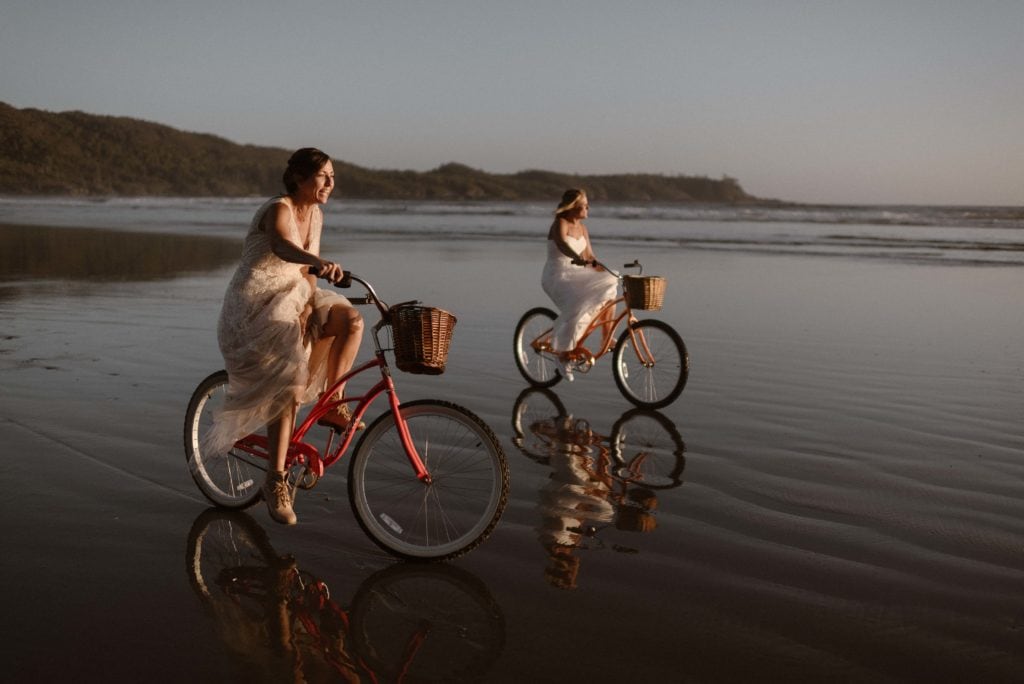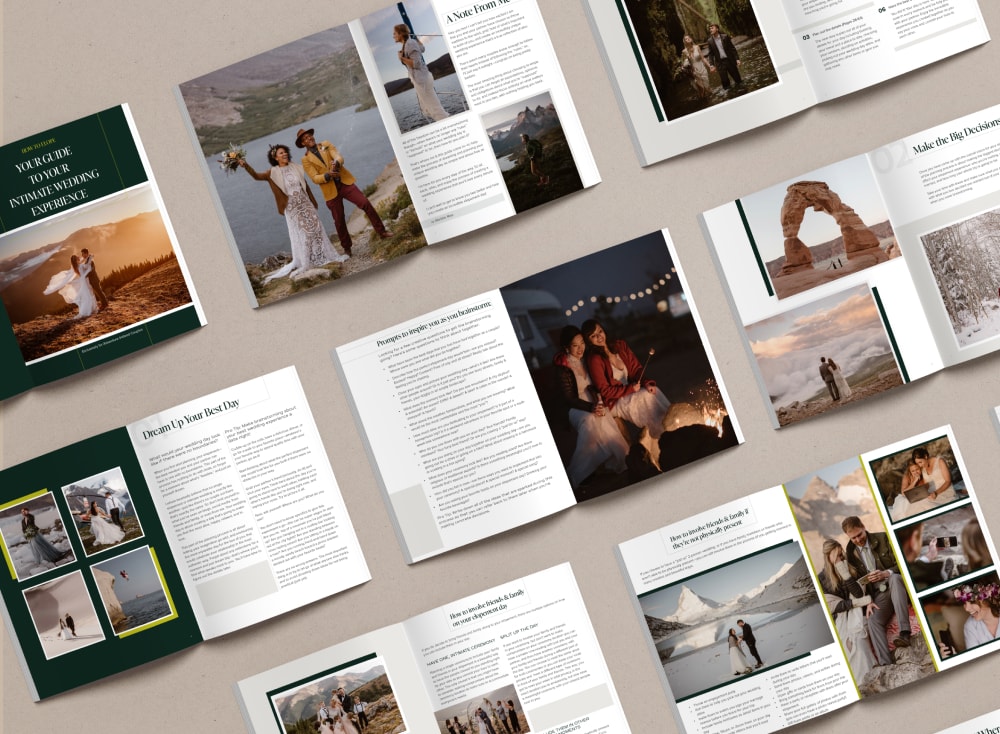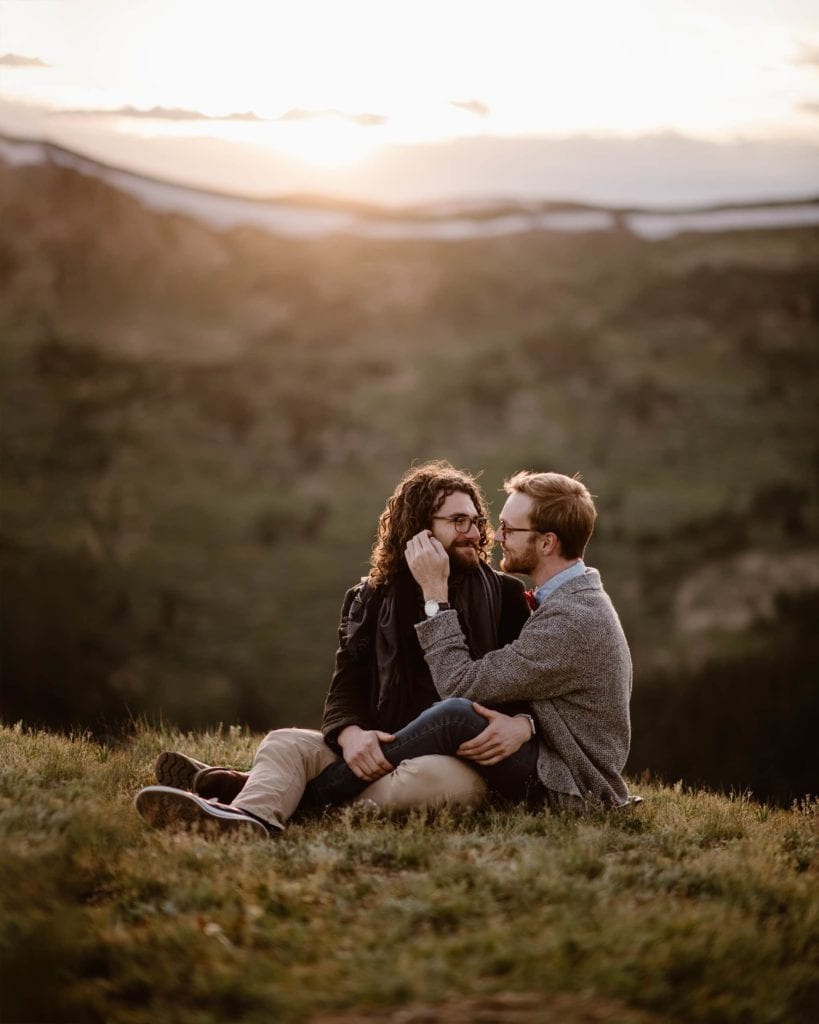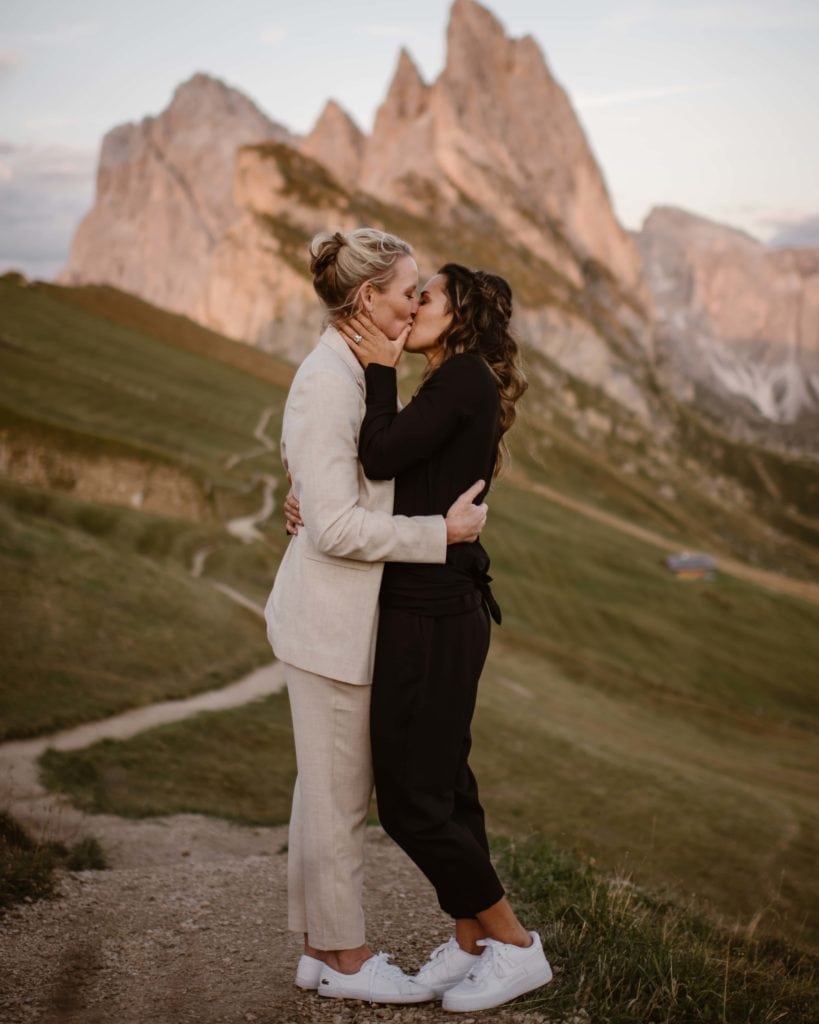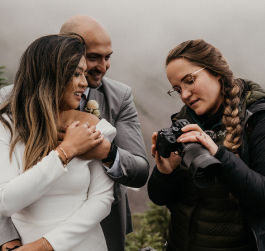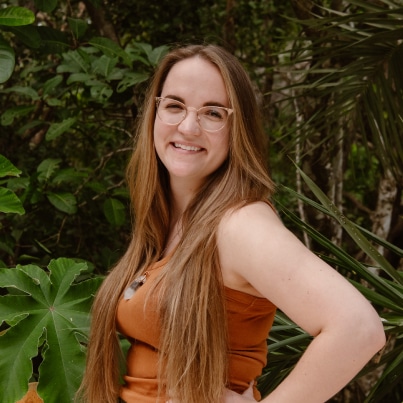8 tangible ways for your photography business to be more welcoming of members of the LGBTQIA+ community
In recognition of June being Pride Month, I want to encourage you to take some time to:
- reflect upon the values behind your photography business…
- ask yourself if you are truly inclusive toward LGBTQIA+ individuals and relationships…
- and challenge yourself to do better in the future…
so your stance on inclusivity can extend beyond this Pride Month.
But before we get into it, who exactly is included within the LGBTQIA+ community? This community includes lesbian, gay, bisexual, transgender, queer, intersex, and asexual individuals, as well as people who are represented by more than one letter. The plus symbol at the end of the acronym is meant to extend to all people who do not identify with a label—or are included in the community by another label not honored in the acronym—as well as individuals who are questioning their gender or sexuality. The acronym is sometimes written as LGBTQIA2S+ to include Two-Spirited individuals, which is a closed term describing a gender identity unique to Indigenous communities. None of the individuals who spoke to us for this post self-identified as being “Two-Spirit” in the experiences shared, but it is an important identity to familiarize yourself with and include in your work. You can watch this six-minute YouTube video from Geo Neptune, a Two-Spirit individual from the Passamaquoddy Tribe of Indian Township, Maine.
The LGBTQIA+ community is not a monolith, including individuals of varying sexualities and genders, and support for this diverse and vibrant community needs to extend beyond surface-level formalities. While words are powerful, true allyship must go one step further. When you add a line to the footer of your site and say “I believe love is love” without any meaningful action to back up that statement, you are not supporting the entirety of this community.
The first step of accomplishing this kind of meaningful support is listening and learning—which is why the information and advice contained in this blog post all originates from the observations and experiences shared by 21 incredible photographers who are a part of the LGBTQIA+ community and from my in-house copywriter (who is also a member of the community).
This blog post was written to amplify those 21 voices—so here are 8 ways that you can become a more LGBTQIA+ inclusive photographer:
- Use inclusive language throughout all areas of your business
- Break away from gendered posing conventions and learn how to photograph all kinds of relationships
- Don’t make assumptions—even straight-passing couples could include LGBTQIA+ individuals
- Include relationships with LGBTQIA+ individuals in your portfolio
- Recognize not all members of the LGBTQIA+ community are part of a couple
- Perform the emotional labor of evaluating destination locations, vendors, venues, and recommendations
- Before you post to any platforms, consider reconfirming with your couples that they are okay with you publicly sharing their wedding photos
- Lastly, value LGBTQIA+ folks beyond checking a box for your portfolio and listen to their feedback
Before we get into each of the above 8 ways, please note the LGBTQIA+ community and culture are not a monolith—this blog post was written based upon the perspectives and experiences shared, but it does not speak for every experience and these reflections might not be accurate to everyone or might not take into consideration intersectional identities (which is when an individual’s identity is made up of several different factors, including: sexuality, gender, ethnicity, race, religion, disability, etc.).
Approaching any members of the LGBTQIA+ community from a place of genuine support and acceptance with an open heart, a willingness to learn and graciously accept feedback, and a dedication to creating a safe space for all is a great start.
Now, let’s get into the 8 ways to be a more LGBTQIA+ inclusive photographer:
1. Use inclusive language throughout all areas of your business, from public-facing marketing platforms to behind-the-scenes client communications
Your Website & Social Media Accounts
This starts with taking a look at your public-facing website copy and social media captions to make sure they are inclusive of all couples.
If you use the phrase “bride and groom” as a stand-in for any future couples you might photograph, you are using exclusionary language. Not only is this exclusionary for same-gender couples, but it also excludes nonbinary individuals who do not feel represented by the very gendered “bride” or “groom” terms. Little But Fierce Photography also points out that “bride” can be exclusionary to women who prefer not to be referred to that way. With more inclusive language, you become more welcoming to all.
If you are looking for some gender-neutral alternatives to “bride and groom,” I would recommend: partners, lovers, marriers, sweethearts, significant others, companions, the couple, or spouses-to-be. Just remember that some of these terms will be up to personal taste and preferences.
Amanda Summerlin Photography also wanted to share an important reminder that “the term ‘queer’ is not as accepted by the LGBTQIA+ community as some folks seem to think it is. After polling my clients for the past few years, less than half of them wish to be referred to as queer. Please be considerate and always ask folks how they wish to be referred to and described, especially on social media.”
The word “queer” comes with a lot of historical context and has been used in many derogatory ways in the past; while some individuals within the LGBTQIA+ community do use the term as an identifier and might use it as an umbrella term to encompass everyone within the community, some individuals still prefer not to be referred to by it. If you are not personally a member of the LGBTQIA+ community, you should use the LGBTQIA+ acronym to refer to individuals within the community, especially on public-facing platforms, before individuals choose to share their preferences when it comes to discussing their personal identities.
Having an optional question to ask for pronouns on your contact form can be a great way to start the conversation about what pronouns individuals are comfortable using, but be aware that pronouns can sometimes be hard to discuss for trans, nonbinary, or questioning individuals, especially if they aren’t out to everyone who will be attending their wedding. With that in mind, only use specific pronouns for a couple after you have asked or observed them using specific pronouns for themselves—and you can address the couple by their names in the meantime (i.e. instead of “the groom’s attire” or “his attire,” try “Alex’s attire”). If you are uncertain about pronouns, it is always best to ask.
Your Client Communications
The need for inclusive language doesn’t stop after a couple has booked you. Jess & Kelly from For Fearless Hearts noted it needs to extend throughout when you are speaking to the individual or the couple—and to “triple check your forms, questionnaires, etc. throughout the entire client experience. It’s an easy adjustment that can make all your couples and individuals feel affirmed, safe, and welcomed.”
You should also look at how you describe different parts of the wedding day. If your client guide or email templates talk about “bridal suites” and “groom suites,” then this is gendered terminology— (Sage Trails Photography recommends “getting ready suites” as an alternative). Rhode Tripper Photography also advises to avoid “‘bridesmaids and groomsmen’ or ‘ladies and gentlemen’ or even ‘mom and dad’ – unless your couple or the person themself tells you to address them that way. Keep it neutral with […] ‘Y’s family/ parents’ or just address people by their names.”
This is incredibly important—especially if you have inclusionary language or statements about inclusive values on your site—because it can be jarring to be working with someone who seems accepting and then have exclusionary communication break that trust.
2. Break away from gendered posing conventions and learn how to photograph all kinds of relationships
Break out of binary posing for your couples by straying away from preconceived notions that there are certain ways masculine-presenting people should be posed, particular ways that feminine-presenting individuals should be posed, and specific ways that they should be posed together. This is more inclusive for all individuals, truly treats them all equally, and helps you ultimately better serve all of your couples, not just those who are a part of the LGBTQIA+ community.
Anna Claire Beasley Photography summarized this in a really meaningful way: “it’s also important to recognize that heteronormativity and sexism often go hand in hand, and while photographing a couple to approach each partner in the same way, instead of trying to put them in a box of ‘masculine posing’ or ‘feminine posing.’ Being a student of your clients and allowing them to guide the direction of their poses based on their individual personalities is so much more authentic than poses aimed at two people with the assumption that one is more ‘masculine’ and one is more ‘feminine.’”
If you are struggling with this, try offering your couples prompts that guide how they naturally interact with each other. So, instead of instructing the more masculine individual to hold the more feminine person because that aligns with internalized gender biases, ask them to hold each other—and notice how they do it naturally. You can ask them questions about what they do, try the same poses with different partners in different positions, or pose according to height, if different. As Elizabeth DeVoe Photography points out, “don’t assume those roles in a heteronormative couple, either! Everyone likes to be the little spoon sometimes!”
Some LGBTQIA+ individuals might be more nervous or shy in front of the camera than others—and there are some common reasons behind that.
- As Solar Rose Co. points out, “there are plenty of reasons why your couple may be uncomfortable displaying affection in public, or even in front of you. We all have different levels of comfort; listen to what your couples are telling you about their boundaries and comfort levels!” For some of these individuals, they might have grown up (or currently live) in places where they are not safe to be fully themselves, and even if you create a welcoming and affirming environment to photograph them in, they might still be nervous or uncomfortable. Always respect their boundaries and don’t pressure them—it’s best to always take an “asking” approach to posing.
- Ashley Vandervelde Photography adds, “The worst thing I hear from my LGBTQIA+ clients, are those who is have worked with photographers in the past, who made them uncomfortable. Either in conversation by not using inclusive language, or being persistent about how the client had to look, pose, or present during their session. Everyone deserves to feel amazing during a session and learning how to work with all kinds of couples is absolutely necessary in order to call yourself a professional photographer.” This is unfortunately behavior I’ve witnessed from photographers in the past, including those who have prioritized their portfolio over a truly inclusive approach. If you are going to photograph a member of the LGBTQIA+ community, you need to be able to put your own expectations aside. For example, LGBTQIA+ individuals might feel most comfortable in attire that goes outside what you have outlined or recommended in your style guide—or any client might, honestly—and you should honor that, whether they are a paying client or a friend modeling for free to help you build your portfolio.
3. Don’t make assumptions—even straight-passing couples could include LGBTQIA+ individuals
Not all LGBTQIA+ individuals are in relationships that present that way—and, in some cases, you might never know someone was a part of the community unless they feel comfortable enough to explicitly share that information with you. As Rhode Tripper Photography puts it, “you can’t assume someone is part of the community just as much as you can’t assume someone isn’t.”
Here are a few examples to illustrate this:
- Bisexual or pansexual individuals dating someone of the opposite gender. Even though this presents as a straight-passing relationship, that individual is still a member of the LGBTQIA+ community and their sexuality is still valid.
- Transgender individuals dating someone of the opposite gender. Again, this couple might present as a straight-passing relationship, but the trans individual is still a part of the community. This can also apply to nonbinary individuals as well.
- Asexual or aromantic individuals dating someone of the opposite gender. Donna Marie Photo Co. shared a personal experience with asexuality, “As an asexual, I sometimes even find myself fighting for space/recognition within the LGBTQIA+ community. Some gatekeepers argue that asexuals don’t face adversity or discrimination based on their sexual orientation. This couldn’t be further from the truth. My biggest ask is that LGBTQIA+ vendors be inclusive of all sexual minorities, not just the ones that experience sexual attraction.” Don’t make assumptions about the level of physical contact, boundaries, or intimacy with any of the couples you are photographing. These individuals might be more prone to discomfort when it comes to physical affection during a shoot, which again reiterates the importance of “asking” instead of “telling” when it comes to posing.
Be mindful of how you approach and communicate with all of your couples—you likely don’t know what backgrounds they are coming from. If an individual does disclose that they are a member of the LGBTQIA+ community, this likely means they feel safe enough to be vulnerable with you. Be particularly mindful of how you respond and avoid insensitive or invasive questions.
4. Include relationships with LGBTQIA+ individuals in your portfolio
It is not enough to say you are welcoming of all couples and all kinds of love—you need to have photos of visibly LGBTQIA+ couples to showcase that value across your social media channels and your website.
While mentioning your commitment to being inclusive and welcoming of LGBTQIA+ couples on your website or in your social media bios is a great start, it is only the beginning. It takes only a few minutes to type up a sentence about your stance, but it takes a more serious form of commitment to act upon that sentiment to photograph LGBTQIA+ couples and showcase their love.
If you have never photographed a queer couple before, I would recommend trying to set up a styled shoot with LGBTQIA+ individuals or couples, but please compensate the couple modeling for you for their emotional labor and time. Your inclusivity starts with your portfolio—and if individuals don’t see themselves represented in your work, there is a chance they are going to pass over you to hire another photographer who is visibly inclusive. Just make sure you are coming from the heart and providing safe and positive spaces when you do!
In the end, It should take no guesswork to know you are genuinely and honestly inclusive.
5. Recognize not all members of the LGBTQIA+ community are part of a couple
The wedding industry has traditionally kept a heavy emphasis on monogamous, two-partner couples—but not all LGBTQIA+ individuals are part of a “couple.”
As Emma Thurgood Weddings best explains, “Polyamorous and ethically non-monogamous (ENM) people are a part of the queer community and receive little to no recognition of their relationship structures in society. […] Despite not being able to be legally married to more than one person, lots of ENM people opt for some kind of commitment ceremony with their partners. Figuring out a way to acknowledge that your ‘love is love is love’ statement means more than two people in a couple can make a world of difference for ENM people searching for service providers.”
You can also take that statement one step further to showcase ENM relationships in your portfolio, which reaffirms your commitment to inclusion.
6. Perform the emotional labor of evaluating destination locations, vendors, venues, and recommendations
If you offer vendor or venue recommendations, make sure they are all accepting of LGBTQIA+ individuals and couples. It is dehumanizing to have your love belittled and invalidated by others, especially if the individual has to call or Google around to find out if a vendor will be accepting of their identity (there are so many horror stories out there about vendors who dropped out last-minute because they didn’t realize they were working with a same-gender couple).
This is especially important if you are trying to help a couple settle on a destination location for their wedding or elopement—because this might not just be a matter of comfort, it could also be a matter of safety for LGBTQIA+ and BIPOC individuals. On this topic, Anna Claire Beasley Photography adds, “there are certain locations that—while beautiful—might not be a safe or comfortable experience because of cultural or societal norms in those places. When suggesting locations or marketing for certain countries or areas, I think it’s really important to consider the comfort and safety of clients who may be treated differently because of their race, gender identity, or sexual orientation.” For example, Saint Lucia is a beautiful place and a common destination for tropical weddings, but it also ranks 12th on Forbes’ 2019 list of dangerous places for LGBTQIA+ travelers.
Similarly, when you are approached by an LGBTQIA+ individual or couple and find that you are unavailable to photograph their day, prioritize giving referrals to photographers who are a part of the LGBTQIA+ community. As Katie O’Docharty Photography puts it, “Who knows better than an actual queer photographer how to take care of the couple, connect with the couple and pose the couple […] I think this is so important and better serves the couple. Of course LGBTQ friendly photogs should still be able to serve queer couples too, I just think queer photographers should have priority.” If this is something you want to implement when you are looking for other photographers to refer, then you can add a line to your referral posts in Facebook groups that say something along the lines of “Must be either a member of the LGBTQIA+ community or be LGBTQIA+ friendly; priority given to members of the community.”
If you are not a member of the LGBTQIA+ community personally, taking on the emotional burden of doing this in-depth, thorough, and important research is an incredible way to show your allyship and take meaningful action.
7. Before you post to any platforms, consider reconfirming with your couples that they are okay with you publicly sharing their wedding photos
Even if the couple signed a model release, it never hurts to reach out to them before sharing their photos on your marketing platforms to reconfirm that it is okay and to ask if there are any specific considerations you should keep in mind (i.e. re-confirming which pronouns or names you should be using publicly).
Some LGBTQIA+ individuals or couples get married without telling anyone in their lives due to homophobia, transphobia, or other forms of hate—or they might be still closeted to specific family members. It is always a good idea to touch base before sharing their images to make sure that they are okay with you using them on public-facing platforms. Some couples might be okay with you using their images for your marketing but prefer you only share their photos on private pages on your website, and others might ask you to only use photos where they cannot be identified, which often means only sharing photos where their faces are not visible. Even though this might feel disappointing from a marketing perspective, remember their privacy and safety matter more than your portfolio.
8. Lastly, value LGBTQIA+ folks beyond checking a box for your portfolio and listen to their feedback
Solar Rose Co. summarized it perfectly: “please remember that your LGBTQIA+ couples are people, not boxes to check on an elopement bingo card. You don’t have to […] treat us differently, or get overly excited just because we’re queer. It’s sweet that you’re thrilled for us, but please, relax, we’re not unicorns!”
While you might get excited to photograph your first LGBTQIA+ individual or couple, treating people differently based upon their personal identity characteristics can become tokenism—which is when you might want to earnestly be inclusive but end up defining them by being a part of the LGBTQIA+ community instead of treating them equally. While this might happen because of good intentions, it can feel othering and ostracizing, sometimes resulting in the pressure of feeling like their identity has to be a performance.
Also, accept that you might make a mistake. If this happens, apologize, correct the mistake, thank the individual who pointed it out to you if you didn’t initially realize yourself, learn from that mistake, commit to doing better next time, and move on. Apologizing profusely or being visibly upset about the mistake without moving on can center you in that conversation instead of the person that your mistake hurt. It is better to do the internal work of improving by yourself or with someone else who has committed to holding you accountable—not inflicting that on the person you hurt.
And remember: we all make mistakes. As Rhode Tripper Photography put it, “it’s okay to get it wrong. I’m queer, and I’m not perfect. I mess up sometimes. Just be willing to admit that you were wrong, apologize, and learn from your mistakes. The language of the queer community is always evolving so we should too!”

In Conclusion
I wanted to say a huge thank you to all of the photographers who contributed to this article, including those who were not directly quoted above:
- Katie O’Docharty Photography
- Emma Thurgood Weddings
- Tawny Ballard Photography
- Mountain Magic Media
- Ashley Vandervelde Photography
- Solar Rose Co.
- Sandra Ardizzone Photography
- Amanda Summerlin Photography
- Elizabeth DeVoe Photography
- Sage Trails
- Sarina Pizzala
- From the Fountain
- Little But Fierce Photography
- Marla Manes Photography
- Christina Hernandez
- Rhode Tripper Photography
- For Fearless Hearts
- Donna Marie Photo Co.
- Anna Claire Beasley Photography
- As well as the two photographers who requested to stay anonymous
Their ideas helped shape this blog post into what it became—so thank you for your emotional labor and for taking the time to educate the photography industry about how we can do better.
And to those out there who read this blog and realized they have a lot of work to do, whether internally or externally: that is okay, and identifying the areas where you could be more accepting and inclusive is the first step to growth.
Now that you have this information available, you can take some time to:
- meaningfully reflect on it
- evaluate the internal biases or misconceptions you might have
- and make a plan on how you can take action to do better and be more inclusive in the future
You can also continue to do your own independent research by reading articles and books written by LGBTQIA+ individuals and making an effort to listen to those voices and what they have to say.
Above all, be thoughtful and intentional about what inclusivity, support, and acceptance mean to you—and then think through how you can weave those values into your business and turn that commitment into action. That can be accomplished by listening to members of the LGBTQIA+ community and by…
- re-evaluating the language you use on your marketing platforms or in your client communication
- adjusting how you pose couples to break away from gendered conventions
- making a point to approach all couples equally—whether you are aware that they include an LGBTQIA+ individual or not
- representing LGBTQIA+ individuals and couples in your portfolio
- remembering and speaking to the fact that not all members of the LGBTQIA+ are monogamous or part of a “couple”
- carefully evaluating any destination location, vendor, venue, or referral you share with the clients you work with to make sure that they share your values and are inclusive to all
- mindfully posting photos of LGBTQIA+ individuals and couples, making sure you have proper permission and are not going to accidentally out anyone
- or remaining committed to treating everyone equally and with respect, not tokenizing LGBTQIA+ individuals or centering mistakes on you
…which results in taking meaningful action—which is the most important part of showing up as an ally to the LGBTQIA+ community—and taking genuine steps to becoming a more LGBTQIA+ inclusive photographer.
